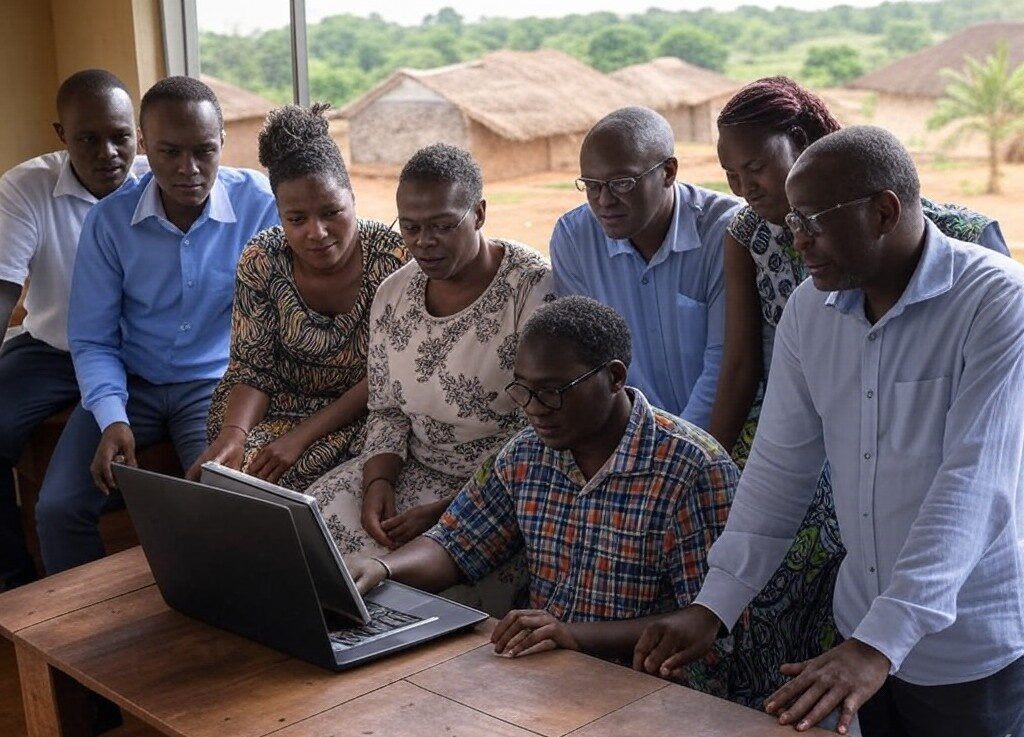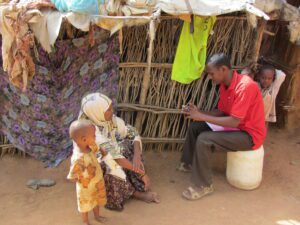1. Introduction
Monitoring and Evaluation (M&E) services are essential for assessing the success, impact, and sustainability of projects and programs. M&E involves systematically collecting data, analyzing progress, and making evidence-based decisions to improve efficiency and accountability.
In Uganda, Comprehensive M&E Services Uganda play a crucial role in development projects, government initiatives, and corporate strategies. These services ensure that resources are allocated effectively, objectives are met, and stakeholders remain accountable.
This article will explore the key components, benefits, challenges, and future of Comprehensive M&E Services Uganda while providing insights into how organizations can leverage M&E for better outcomes.
2. Understanding M&E Services
What Are Monitoring and Evaluation (M&E) Services?
M&E services involve systematic processes for tracking, assessing, and improving projects, policies, and programs. These services help organizations measure progress, identify challenges, and optimize their strategies based on real data.
Key Objectives of M&E Services
- Tracking Progress: Monitoring ongoing activities to ensure they align with project goals.
- Assessing Impact: Evaluating whether objectives have been achieved and how beneficiaries are affected.
- Enhancing Learning: Using data-driven insights to improve future projects and programs.
How M&E Services Enhance Project Effectiveness
- Data-Driven Decision Making: Ensures organizations rely on facts rather than assumptions.
- Resource Optimization: Helps allocate budgets and human resources efficiently.
- Improved Transparency: Holds stakeholders accountable for project outcomes.
3. Importance of Comprehensive M&E Services Uganda
The significance of M&E services in Uganda extends across various sectors, from government agencies to private enterprises.
Role of M&E in Policy-Making and Governance
Government agencies rely on M&E to:
- Assess the success of public policies.
- Identify gaps in service delivery.
- Improve planning for future national development programs.
Enhancing Accountability and Transparency
M&E ensures organizations remain accountable to funders, stakeholders, and the public by providing verifiable data on project performance.
Improving Project Planning and Resource Allocation
Proper M&E frameworks enable organizations to plan efficiently, set realistic targets, and avoid resource mismanagement.
4. Key Components of Comprehensive M&E Services Uganda
4.1 Monitoring Services
Monitoring involves continuous data collection to track progress and identify areas needing improvement. Key aspects include:
- Real-Time Data Collection: Using digital tools to capture immediate feedback.
- Key Performance Indicators (KPIs): Setting measurable targets for success.
- Adaptive Management: Making adjustments based on monitoring results.
4.2 Evaluation Services
Evaluation assesses whether project objectives were met and what impact they had. Types of evaluation include:
- Formative Evaluation: Conducted at the beginning to refine project design.
- Summative Evaluation: Performed at the end to measure overall success.
- Impact Evaluation: Determines long-term effects on beneficiaries.
5. Sectors That Require Comprehensive M&E Services Uganda
M&E services are essential in various industries, including:
- Government: To assess national policies and public service delivery.
- NGOs and Development Agencies: To evaluate humanitarian projects and donor-funded programs.
- Private Sector: To measure business performance and impact.
- Education and Healthcare: To improve service quality and efficiency.
6. Steps in Implementing Comprehensive M&E Services
A successful M&E framework involves the following steps:
- Setting Goals and Indicators: Defining clear objectives and success metrics.
- Data Collection and Analysis: Using surveys, reports, and field observations.
- Reporting and Feedback Mechanisms: Sharing findings with stakeholders for informed decision-making.
7. Benefits of Investing in M&E Services in Uganda
Investing in Comprehensive M&E Services Uganda provides numerous advantages for organizations, government agencies, and development programs. These services not only enhance project performance but also contribute to long-term sustainability and impact.
Improving Efficiency and Effectiveness of Projects
- M&E ensures projects stay on track by continuously monitoring progress against objectives.
- Identifies inefficiencies and allows for corrective actions to be taken promptly.
- Ensures resources are allocated effectively, minimizing wastage.
Ensuring Transparency and Accountability
- Helps organizations maintain credibility by demonstrating responsible fund utilization.
- Donors, stakeholders, and beneficiaries can access real-time updates on project progress.
- Provides verifiable data that prevents corruption and mismanagement.
Facilitating Better Decision-Making
- Data collected through M&E allows for informed decision-making at all project stages.
- Enables organizations to adapt to changing conditions based on evidence.
- Helps policymakers and leaders prioritize impactful projects for national development.
By integrating Comprehensive M&E Services Uganda, organizations can maximize their impact, improve operational efficiency, and build trust with stakeholders.
8. Challenges Facing Comprehensive M&E Services Uganda
Despite its importance, the M&E sector in Uganda faces several challenges that hinder its effectiveness.
Limited Funding and Resources
- Many organizations lack the financial resources to implement robust M&E frameworks.
- Donor-funded programs often allocate insufficient budgets for M&E activities.
- Limited access to advanced data collection tools and software due to high costs.
Lack of Skilled M&E Professionals
- Uganda faces a shortage of trained M&E specialists who can design and execute effective evaluations.
- Many organizations struggle to recruit staff with expertise in data analysis, reporting, and impact assessment.
- Limited M&E training opportunities result in a skills gap in the sector.
Data Quality and Reliability Issues
- Inconsistent data collection methods lead to unreliable reports.
- Lack of standardized data collection tools across organizations.
- Difficulty in verifying field data due to challenges in accessing remote areas.
To overcome these challenges, organizations must invest in capacity-building, improve funding strategies, and adopt modern digital solutions for efficient M&E implementation.
9. Choosing the Right M&E Service Provider in Uganda
Selecting a reliable M&E service provider ensures that projects are evaluated accurately and efficiently. Here are key factors to consider:
Factors to Consider
- Experience and Expertise: Look for providers with a strong track record in M&E services.
- Use of Technology: Ensure they utilize modern data collection and analysis tools.
- Understanding of Local Context: Providers should have in-depth knowledge of Uganda’s development landscape.
Certifications and Accreditations
- Reputable M&E service providers should have relevant certifications from recognized institutions.
- Check for affiliations with international M&E organizations such as the African Evaluation Association (AfrEA).
- Ensure they adhere to best practices and ethical standards in M&E.
Reviewing Past Projects and Client Testimonials
- Assess case studies and success stories from previous evaluations.
- Look for positive client feedback and reviews.
- Request references from past clients to gauge the provider’s credibility.
A well-qualified Comprehensive M&E Services Uganda provider will ensure your projects meet international standards and achieve desired outcomes.
10. The Future of Comprehensive M&E Services Uganda
The M&E sector in Uganda is evolving, with advancements in technology and growing recognition of data-driven decision-making.
Innovations in Data Collection and Analysis
- Mobile-based data collection tools are improving real-time reporting.
- Geographic Information Systems (GIS) are being used to track project impact in remote areas.
- Cloud-based M&E platforms enable secure and efficient data storage.
Integration of AI and Digital Tools in M&E
- Artificial intelligence (AI) is enhancing data analysis by identifying trends and patterns.
- Machine learning tools are improving predictive analysis for development projects.
- Blockchain technology is being explored to ensure data integrity and security.
Growing Demand for Evidence-Based Policymaking
- The Ugandan government and international donors are increasingly prioritizing M&E in development projects.
- Evidence-based policymaking is becoming essential for sustainable economic growth.
- More organizations are adopting comprehensive M&E frameworks to improve accountability and effectiveness.
As the sector embraces innovation, Comprehensive M&E Services Uganda will continue to play a vital role in shaping impactful development programs.
11. Conclusion
Monitoring and Evaluation (M&E) services are indispensable for ensuring the success of projects and programs across various sectors in Uganda. They provide data-driven insights, improve efficiency, and enhance accountability for organizations, government agencies, and NGOs.
Despite challenges such as limited funding, a shortage of skilled professionals, and data reliability issues, the M&E sector is evolving with technological advancements. Organizations that invest in Comprehensive M&E Services Uganda will be better positioned to achieve sustainable growth, enhance transparency, and optimize their impact.
By choosing the right M&E service providers and adopting innovative data collection methods, Uganda can strengthen its development programs and ensure long-term success.
12. FAQs
1. What is the main purpose of M&E services?
M&E services aim to track progress, evaluate project impact, and improve decision-making by providing data-driven insights.
2. How do M&E services improve project success?
By continuously monitoring progress and assessing results, M&E helps organizations identify challenges, optimize resources, and achieve intended outcomes efficiently.
3. What tools are commonly used in M&E?
Some common M&E tools include KoboToolbox, GIS mapping, mobile-based surveys, dashboards, and AI-driven analytics platforms.
4. What challenges do M&E professionals face in Uganda?
Key challenges include limited funding, lack of skilled personnel, unreliable data collection methods, and difficulties in accessing remote areas.
5. How can I choose the best M&E service provider?
Look for experience, certifications, use of modern technology, strong client testimonials, and a deep understanding of Uganda’s development landscape.






